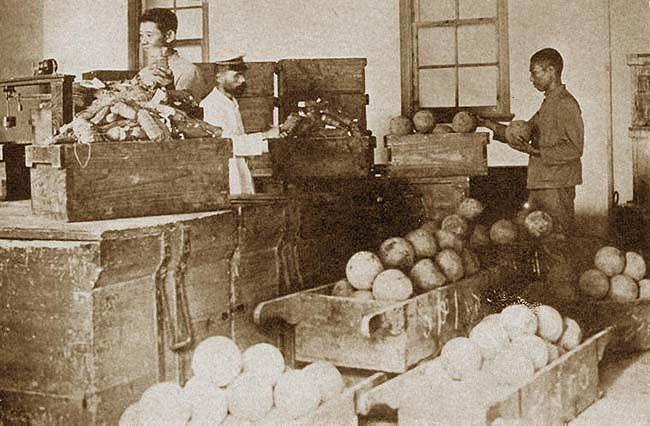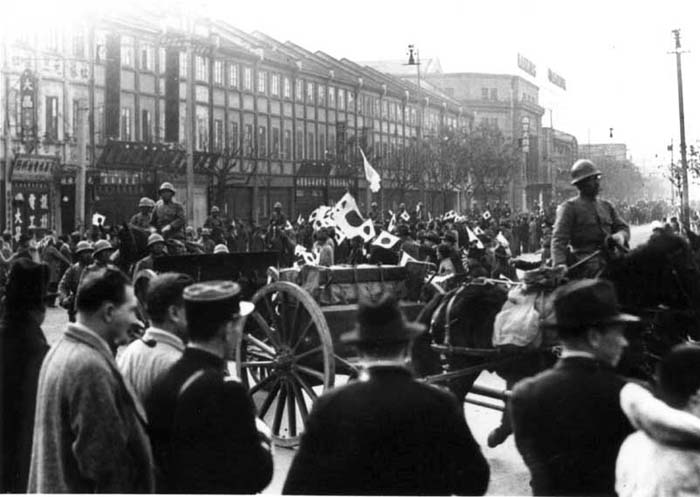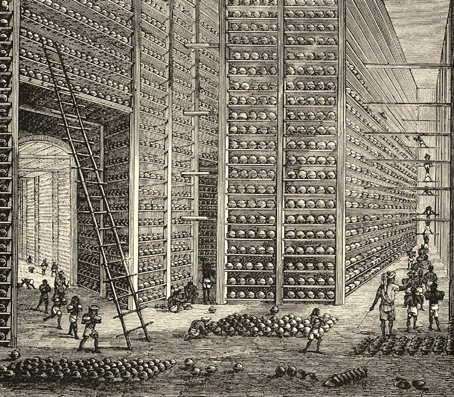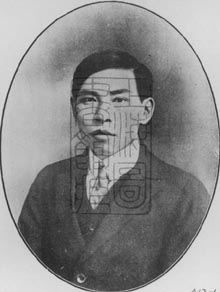|
||||||||
| Return to Previous Page | ||||||||
|
Unpacking opium cases at the Government Opium Factory in Taihoku (Taipei) |
||||||||
| The Japanese Government of Formosa's opium policy had seen the construction of a modern opium refinery whose net profit, contributing about 10% of revenues, had enabled Formosa to become self-sufficient in finance by 1905. This amount was much in line with the contribution from the British Government's opium monopoly to the finances of British India. However, whereas the British relied upon exports for their Indian opium, the Formosan authorities were soon faced with a dwindling domestic demand. | ||||||||
| The Japanese policy for the gradual abolition of opium smoking was to prove highly successful. After 1900 the number of opium addicts progressively decreased. In September 1900, the number of addicts was 169,064; falling to 127,278 in 1908; to 42,923 in 1922; and to 24,626 by the end of 1929. The number of addicts would further fall to 11,926 by the end of 1937. Over the same period the quantity of prepared opium sold in Formosa (Taiwan) by the Formosan Monopoly Bureau decreased from 200,927 kilograms in 1900 to only 16,020 kilograms in 1937. | ||||||||
| After the Meiji Restoration in 1867, Japan had sought development by emulating the West. Although there had been strict controls on opium in Japan from the first Opium War onwards, the Japanese emulated the western powers by smuggling opium into China. Soon morphine, touted as a cure for opium addiction, crept across the globe and Japanese nationals began to sell morphine in China and then to manufacture it there. And by 1920 around 20,000 kg of Japanese morphine was being imported into China, in contravention of International Convention, with perhaps 25% originating in Formosa. | ||||||||
| On 14 February 1919 the following article appeared in the New York Times: | ||||||||
|
||||||||
|
After
War War I Japan had inherited German possessions in China and acquired
control of lands in Manchuria from Russia which had lost a war with
Japan in 1903. As a result the Japanese progressively moved to become
more assertive in China by building railroads and setting up banks.
During the 1930s Japan entered its militaristic phase and began to prepare for its invasion of China. Morphine was seen as a means of undermining the Chinese people, both morally and physically. The Japanese set up well-lit and attractive clinics in their concessions. Heroin and particularly morphine were prescribed and sold to patients in unlimited amounts. |
||||||||
|
Japanese troops enter Shanghai in 1937 |
||||||||
| By 1938, following their invasions of the coastal areas of China, the Japanese were in the position to declare an official monopoly over the opium trade in East Asia. As in Formosa before, the revenue poured in, with, as an example, some 8% of budget receipts coming from the sale of morphine. When supplies of British opium were eventually cut off during the late 1930s and 1940s the Japanese army in China even cultivated extensive opium plantations in Manchuria and Korea and sold the opium into China, to finance the Japanese war effort. | ||||||||
| However, although the Japanese have come in for much well-deserved criticism over this 'chemical warfare', the earlier role of the British and the role of the Kuomintang-condoned Green Gang should not be overlooked. | ||||||||
|
||||||||
|
Tu Yueh-sheng 1881-1951 |
The Green Gang, based in Shanghai, had been instrumental in the rise of
the Nationalists or Kuomintang. (See Post Japan
File). Led by the ardent nationalist and anti-Japanese
Tu Yueh-sheng,
the Green Gang
did not scruple either to enslave their own people nor to cooperate with
the Japanese to carry on their deadly trade.
Through Tu's dominance of Shanghai, the Nationalist government had destroyed the communist opposition yet cemented an alliance with opium. The Ministry of Finance came to rely on the drugs trade as a source of unofficial revenue. |
|||||||
|
However, the Nationalist government did not manage to assert similar control over the opium and narcotics traffic in North China. There, Japanese, Korean, and Formosan gangsters ran the morphine and heroin trade with the apparent protection of the Japanese authorities in the Peking-Tientsin area. Elements in the Japanese Army undeniably sought to profit from the opium business at the expense of North China. Yet not all Japanese authorities in China, let alone in Tokyo, wanted to poison the Chinese populace as a matter of policy. Efforts to regulate the drug trade and provide medical treatment to addicts, which paralleled similar actions in Chiang’s China, occurred in Manchuria under Japanese auspices. While the Kuomintang did carry out narcotics control programs in North China, these often seemed more like a contest for the market between Manchurian opium on the one hand and opium from Tu Yueh-sheng on the other. No matter which side won the right to ply the opium trade in the north, the local citizenry lost. Nonetheless, U.S. policymakers held the Japanese solely responsible for conditions in North China. "The opium policy of Japan is calculated to ruin the Chinese race," they reported to their superiors. This denial of the complexity of the situation underscored the effectiveness of Chiang Kai-shek's opium strategy and would in time allow them to interpret Japanese actions as a threat to overall Western interests in East Asia. |
||||||||
| A
Cocaine
Footnote
By 1920, Japan itself produced more than 2,000 kgs of cocaine, which then doubled to 4,000 by 1922. Although officials figures for the 1930s shrunk to just under 1,000 kgs, these are considered by historians as doctored for international consumption. Exports across Asia officially dropped to negligible levels, though complaints registered about Japanese firms and reporting, as well as cases of deliberate smuggling (such as the "Fujitsuru" and "Taiwan Governor" brand vials in India). Other specialists have noted growing diplomatic cooperation between Japan and international drug officials, at least until the invasions of Manchuria and China, when opiates became a major issue. The firms making cocaine and morphine were among Japan's largest: Hoshi, Sankyo, Koto and Shiongo Pharmaceuticals, and enjoyed growing links to major trading trusts (such as Mitsui and Mitsubishi) and to interlocking governmental, colonial and military officials.
In 1934, the Japanese authorities had 694 acres in Taiwan's Kagi
(Chia-yi) district under
intensive coca cultivation (by Taiwan Shoyaku and Hoshi). As a result,
about 300,000
pounds of Formosan coca leaf were being harvested annually by the late
1930s, and Peruvian imports could be officially discontinued in 1938.
During World War II the whole pharmaceutical industry, self-sufficient in imperial Japan, came under war-government jurisdiction. In that sense, if cocaine was indeed marketed for non-medical purposes across occupied Asia--and the evidence mainly concerns opiates--the state bore responsibility. In any case, Taiwanese coca was demolished by war and the entire pharmaceutical industry reorganized (without cocaine) under the U.S. Occupation of Japan in 1945 (its previous practices an explicit charge of U.S. tribunals). A two-decade autonomous coca sphere abruptly ended. |
||||||||
| Previous Page | ||||||||
|
||||||||



